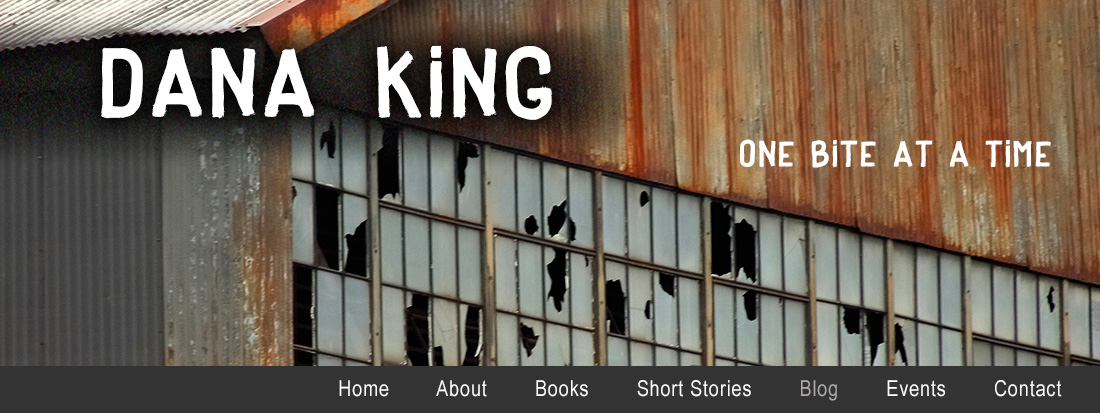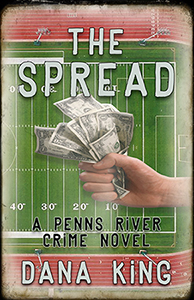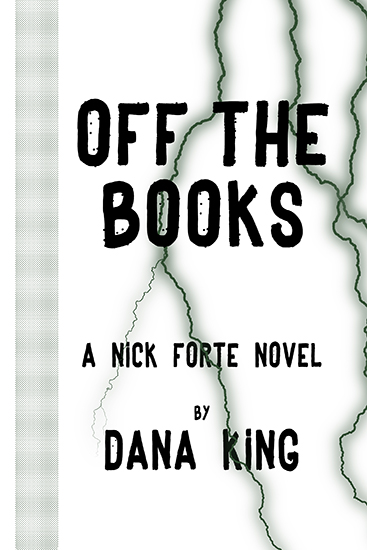Patricia Abbott is the author of more than 150 short stories that
have appeared in print and online publications. She won the Derringer Award in
2008 for her story "My Hero." She is the co-editor of the e-anthology
Discount Noir. Collections of her
stories Monkey
Justice and Other Stories
and Home
Invasion were published by Snubnose
Press.
That’s what Amazon has to say about Patti Abbott. Thin gruel. What
it leaves out is the precision and attention to detail that mark everything she
writes. Not to mention her influence on other writers through her blog, both
through the exposure given and the good examples she provides. I sincerely doubt
I would be published today were it not for the skills I learned from
participating in her flash fiction challenges, which taught me not only to take
a prompt I would not have thought of and make it my own, but also how to
ruthlessly cut writing I thought was already tight and make it better.
One Bite at a
Time: Tell
us about Shot in Detroit.
 Patti Abbott: Shot in Detroit is the story of a female photographer, nearing
forty, who wants to find a project that is successful artistically,
financially, and most of all in terms of representing what's going on in
Detroit circa 2011. When her mortician boyfriend asks her to photograph the
body of a young black man who's being shipped back to the UK, she believes she
has found her subject.
Patti Abbott: Shot in Detroit is the story of a female photographer, nearing
forty, who wants to find a project that is successful artistically,
financially, and most of all in terms of representing what's going on in
Detroit circa 2011. When her mortician boyfriend asks her to photograph the
body of a young black man who's being shipped back to the UK, she believes she
has found her subject.
OBAAT: Readers love to ask where
authors get their ideas and most authors reply with something along the lines
of “we’re tripping over them. The trick is to find the idea that works best for
me.” What made this idea worth developing, and how much development from the
original germ was required?
PA: There was a female
photographer who took pictures of the dead through a mortician's cooperation in
Harlem. She was quite successful with her project, even getting a feature piece
in the New York Times, a gallery
show, a book deal. I was looking for an idea I could use to explore the deaths
of black men going on in Detroit at that time (around 2007) and this seemed
like a vehicle for doing it. I, of course, changed everything about the story
except for this original concept. I also wanted to explore the special sort of
narcissism that an artist needs to succeed.
OBAAT: How long did it take to
write Shot in Detroit, start to
finish?
PA: That's hard to say because
I wrote it, and then rewrote it, and then rewrote it. My original story had
Violet Hart a lot more promiscuous, a lot more callous about what she was up
to. Over time, I realized that only a sociopath could be that cavalier about
her work (and her life) and so I moderated both. I would say two to three
years.
OBAAT: Where did Violet Hart come
from? In what ways is he like, and unlike, you?
PA: She's not very much like me
in most ways. She is fiercely independent and I am not. She's not afraid to be
unlikable, which I am. She's a loner, which I am certainly not. I based her on
several successful female artists, writers that I know. Women who are not
afraid to put their personal lives aside mostly to pursue their dream. I think
we are alike in that we are using, but hopefully not exploiting, the people of
Detroit in a way that might be seen as decorous.
OBAAT: In what time and place is Shot in Detroit set and why was this
time and place chosen?
PA: SID is set around 2011.
That was when I started rewriting it and I kept it set there because I wanted
it to take place at the time when Detroit was at its lowest point financially.
Before developers and artists and musicians started showing up for its cheap
rents. Also at a time when the Sunday supplement listing foreclosures was the
thickest section of the local newspaper.
OBAAT: How did Shot in Detroit come to be published?
PA: Polis Books offered me a
two-book deal two years ago after Angry Robot pulled out. SID had actually been
written first [before Concrete Angel]
but it was definitely the more iffy project. Would people accept a prickly,
often selfish, woman like Violet Hart? In CA, Christine balances her mother's
narcissism. In SID, there is no character with as large a role as Christine to
give readers someone more likable. I had to rely on three or four men to do the
job.
OBAAT: What kinds of stories do
you like to read? Who are your favorite authors, in or out of that area?
PA: I like to read stories
about people at a crossroad. About people trying to decide how to go forward
with their secret desires, how to cope with their troubles. I like stories
about people at the bottom or at least below the middle economically. My
favorite writers include: Alice Munro, Joy Williams, Charlie Baxter, Anne
Tyler, Stewart O'Nan, Laura Lippman, Tana French, Ken Bruen, Lorrie Moore,
William Trevor, Adrian McKinty, Ann Beattie, Margaret Millar, Elizabeth Xansay
Holding, Ross Macdonald, Muriel Spark, Joe Lansdale, Larry Brown, Larry Watson.
So many more.
OBAAT: What made you decide to be
an author?
PA: A course I signed up for
when I returned to college in the nineties on the American Indian had too large
of a reading list to fit in with my work obligations. A poetry workshop met at
the same time and I had always harbored some ideas about trying my hand at
writing. Since childhood, I told myself stories to put myself to sleep so I had
a large backlist. I started with poetry in that class but moved on when a wise
editor told me I was really writing stories not poems.
OBAAT: How do you think your life
experiences have prepared you for writing crime fiction?
PA: Beats me. It was what I read
most often, and what interested me when I picked up a pen. Although my earliest
stories were more literary than later ones, most had a criminal or suspense
element. It gave me a nail to hang the writing on.
OBAAT: What do you like best about
being a writer?
PA: Editing. I love to edit. I
hate getting the bare bones down but I love polishing them, making them better,
adding the middle and base notes. (Editor’s
Note: Ah. A kindred spirit.)
OBAAT: Who are your greatest
influences? (Not necessarily writers. Filmmakers, other artists, whoever you
think has had a major impact on your writing.)
PA: Claude Chabrol, the
director. I love the way he tells a story. I love the way the French tell
stories in general. They love the minutia of life as do I. Big moments elude
me--it's the small ones I can linger over longest. The paintings of Edward
Hopper and Reginald Marsh. The stories of Alice Munro.
OBAAT: Do you outline or fly by
the seat of you pants?
PA: Sadly, I am still a
pantser. I am getting better though. I have an entire story in my head right
now. A woman I met waiting for my plane in Krakow told it to me. How generous
although she will never realize it.
OBAAT: Give us an idea of your
process. Do you edit as you go? Throw anything into a first draft knowing the
hard work is in the revisions? Something in between?
PA: I constantly edit. I start
from the beginning every day with a short story. With the longer pieces I did
that as much as I could until it became ridiculous. I always feel better when I
am improving what is already on a page.
OBAAT: Endings are hard and can
make or break a book. Americans as a whole tend to lie happy endings, and those
are the books that tend to sell best. What are you looking for in an ending:
“happy” or “satisfying?”
PA: I am looking for an ending
that seems appropriate to the story. Best is when it's a bit of a surprise but
entirely right for what's gone before it. Sometimes that works out to be happy,
sometimes funny, and sometimes sad. I certainly don't require happy endings
because they usually don't feel fitting to me. None of the writers I listed
above are known for a happy ending. People like me—semi-depressed most of the
time—find it hard to see a happy ending ahead.
OBAAT: Who is your intended
audience?
PA: This is going to sound odd,
but since I have been writing in my head for myself since age 7, I think I am
my intended audience. That is probably a weakness. I have quirky tastes in what
I read so I am probably writing quirky stories.
OBAAT: If you could give a novice
writer a single piece of advice, what would it be?
PA: Read. Not an original piece
of advice but I was always amazed at the students in classes I took who had
read so little. Their frame of reference was so small. Also stay in the chair.
I have to relearn that now myself.
OBAAT: Generally speaking the
components of a novel are story/plot, character, setting, narrative, and tone.
How would you rank these in order of their importance in your own writing, and
can you add a few sentences to tell us more about how you approach each and why
you rank them as you do?
PA: Character is far and away
the most important to me. When people give me their ideas for a story, they are
always a concept or a plot so I can seldom use them. Tone would be next. It
doesn't work if I don't get the tone or "voice" right. The rest alter
in importance. On occasion, a setting can be critical.
OBAAT: If you could have written
any book of the past hundred years, what would it be, and what is it about that
book you admire most?
PA: Stewart O'Nan's Last Night at the Lobster. It is so
succinct, so sad, so full of character. Second: Montana: 1948 by Larry Watson. Third: Winter's Bone, Daniel Woodrell. Same reasons for all of them. These
writers create characters that chill you to the bone. Both their heroes and
their villains. (Editor’s Note: Patti is the second person of taste to mention Last Night at the Lobster to me in the
past several weeks. Looms like I’m going to have to find that one. I’m already
all in on Winter’s Bone and
Woodrell.)
OBAAT: Favorite activity when
you’re not reading or writing.
PA: Movies, movies, movies.
OBAAT: What are you working on
now?
PA: That Polish woman in Krakow
is haunting me. Can't wait to write it.





12 comments:
Excellent interview, you two. Also some great reminders to bump some things up my virtual TBR pile.Including Shot in Detroit.
Thanks, Seana. How nice to find you here. And thanks to Dana, a friend underdog!
Yeah, I don't know exactly where in our interconnected circles that I first learned of Dana, but I have read several of his books and really enjoyed them. Also got a chance to meet him in Long Beach at Bouchercon. Perhaps we will all meet in New Orleans, as I have registered to go. Just have to remember to get a plane ticket.
Enjoyed that interview. Thanks for running it.
Patti, it's always a pleasure to have you here on OBAAT. Best of luck with the book.
Seana,
I believe we may first have become aware of each other through comments on Adrian McKinty's blog. I'm looking forward to seeing you again in New Orleans.
Thanks, Charles. Stop by any time.
Yeah, I thought it might be down to Adrian. But it could equally have been Peter Rozovsky or Declan Burke. In any case, I'm very lucky to be connected to you all.
Great interview, Dana and Patti! Good luck with SHOT IN DETROIT. I have read Patti's short stories. She makes writing look so effortless though I know it's far from that. I look forward to reading both her novels.
Really enjoyed reading this interview as I'm halfway through SID. And, as always, I love process questions. I particularly appreciated the idea that Patti started rewriting in 2011 and decided to keep the story set in that year versus 'updating' it.
Scott- Detroit began its rebirth about then. The Detroit of that era is not the Detroit of today due to many forces. First came the musicians, then the artists, then the developers. Downtown yesterday and Detroit I hardly knew ya.
Nice interview, can't wait to read it...
Post a Comment